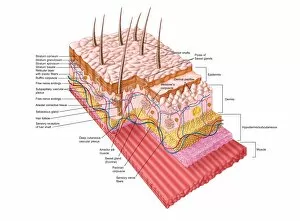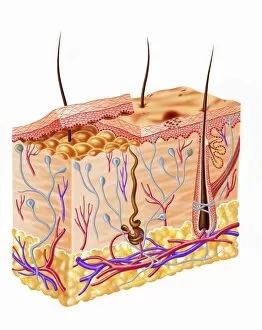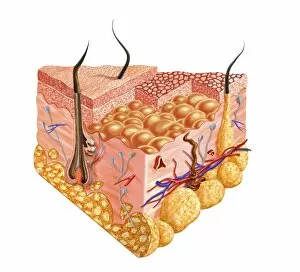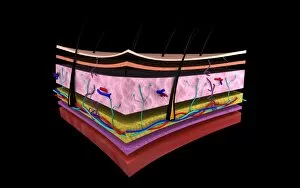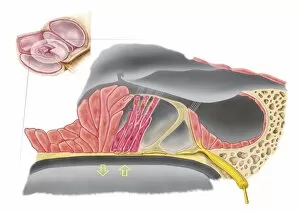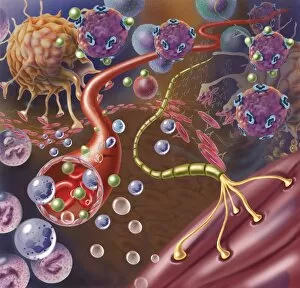Afferent Neurons Collection
Afferent neurons, also known as sensory neurons, play a crucial role in our perception of the world around us
All Professionally Made to Order for Quick Shipping
Afferent neurons, also known as sensory neurons, play a crucial role in our perception of the world around us. These specialized cells are responsible for transmitting information from various sensory receptors to the central nervous system. In the intricate anatomy of the human skin, they can found embedded within its layers. A conceptual image depicts these layers, showcasing their complexity and highlighting how they contribute to our tactile sensations. The organ of Corti, nestled within the cochlea of our inner ear, is another site where they are be found. This diagram illustrates its anatomy and emphasizes how these neurons enable us to perceive sound waves and convert them into electrical signals that our brain can interpret. Our senses have a profound impact on our thoughts and perceptions. A representation shows this connection between sensory input and cognitive processes, emphasizing how afferent neurons act as messengers between external stimuli and internal mental states. Furthermore, it is important to recognize that our thoughts can influence our emotions too. Another depiction highlights this relationship by illustrating how thoughts trigger emotional responses through interconnected neural pathways involving afferent neurons. To truly understand the significance in sensation, we delve deeper into detailed cutaway diagrams of human skin. These visuals provide an intricate view of their location and function within this vital organ's structure. Moving beyond the skin's surface, we explore further connections within the body's nervous system. A schematic showcases how nerve impulses from different parts of the body converge at the hypothalamus—a region involved in regulating essential bodily functions—via a network including afferent neurons. Zooming into the brain itself reveals yet another aspect related to these remarkable cells—the layout of the sensory cortex. Illustrated here is an overview demonstrating which areas receive specific sensory inputs via dedicated pathways formed by clusters of interconnected afferent neurons. Lastly, we observe one such neuron with its myelin sheath—an insulating layer allowing for faster transmission—connecting with a muscle.

